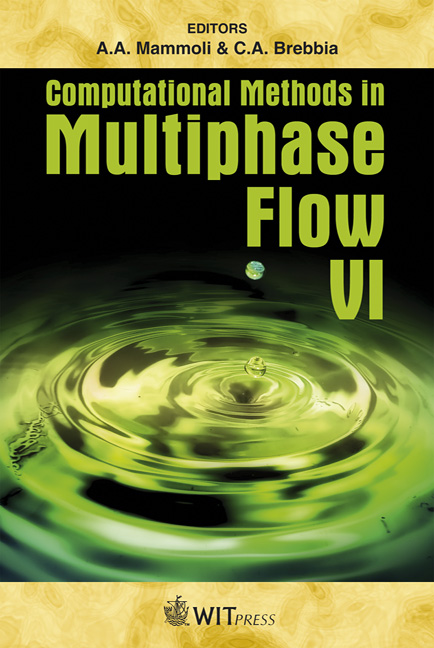Heat And Mass Transfer In Evaporating Turbulent Drop-laden Flow
Price
Free (open access)
Transaction
Volume
70
Pages
11
Page Range
129 - 139
Published
2011
Size
327 kb
Paper DOI
10.2495/MPF110111
Copyright
WIT Press
Author(s)
R. Groll
Abstract
This work deals with the computational modelling of the mass transition of evaporating liquid drop-laden gas flows. In the present study the evaporation model due to Abramzon and Sirignano (1989) has been extended by introducing an additional transport equation for a newly defined quantity a, defined as the phase-interface surface fraction. This allows the change in the drop diameter to be quantified in terms of a probability density function. The source term in the equation describing the dynamics of the volumetric fraction of the dispersed phase αD is related to the evaporation time scale τΓ. Keywords: Euler/Euler approach, Euler/Lagrange approach, gas/liquid flow, evaporation model, heat and mass transfer, volume and surface fraction. 1 Introduction The dimensionless numbers characterizing the heat and mass exchange process are Nusselt numberNu and Sherwood number Sh. Several models (e.g. Renksizbulut and Yuen [1] and Park et al. [2]) are based on the correlation model of Ranz and Marshall [3] and have been developed to model the parameters. The evaporation rate model of Abramzon and Sirignano [4] considers additionally the latent heat flux of the evaporated liquid leaving the droplet. The correct capturing of the gas phase humidity requires the liquid vapor mass ratio Y , influenced by convective, conductive, turbulent and thermal diffusive effects, to be computed from an appropriate transport equation in addition to the equation governing the temperature field T . In an evaporating process the mass transfer rate on the drop surface depends on the drop size. The polydispersed spray consists of drops with different diameters.
Keywords
Euler/Euler approach, Euler/Lagrange approach, gas/liquid flow, evaporation model, heat and mass transfer, volume and surface fraction





